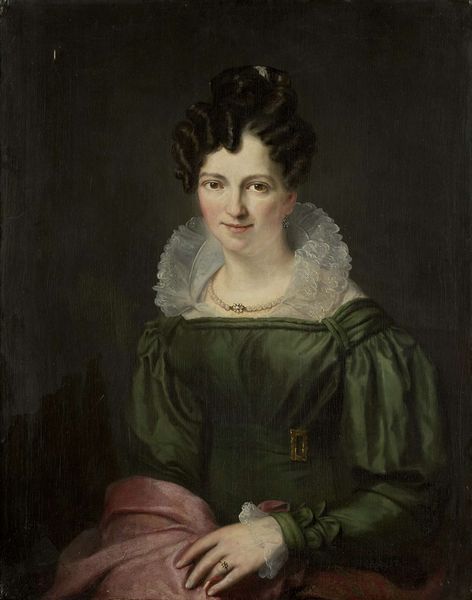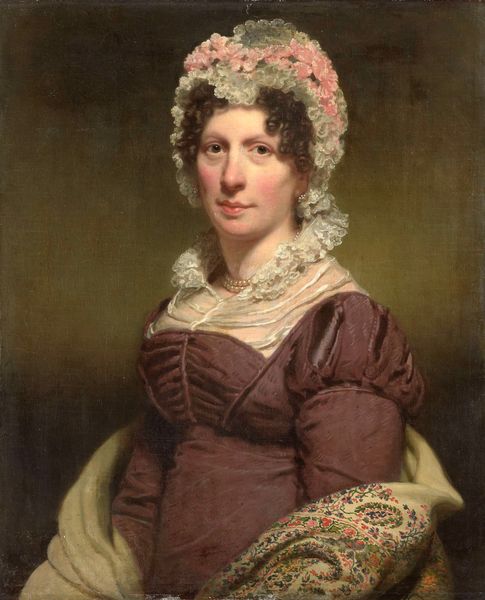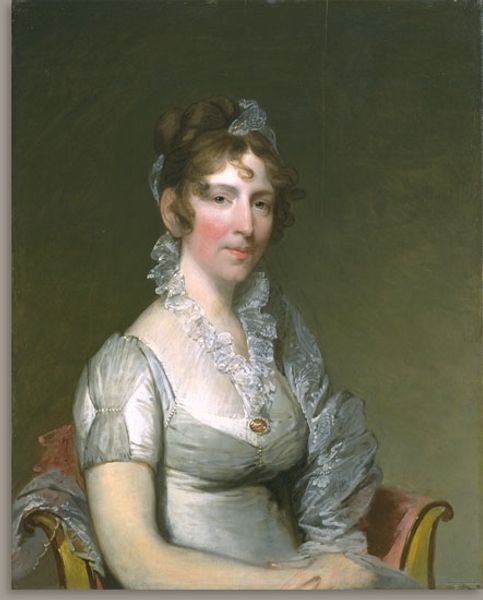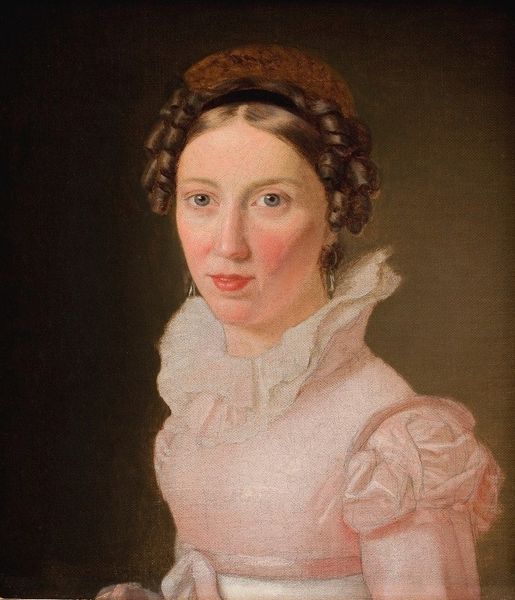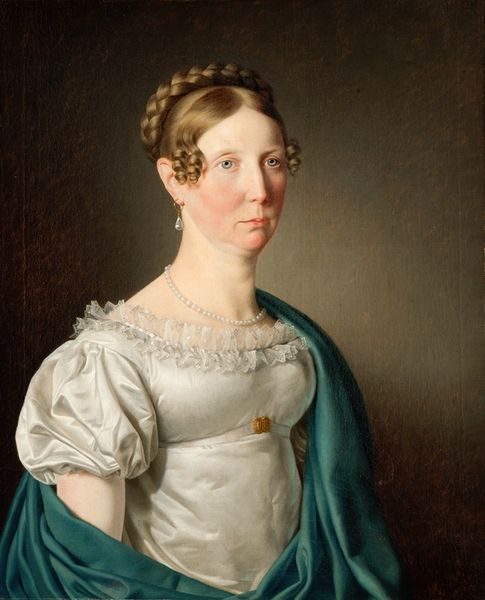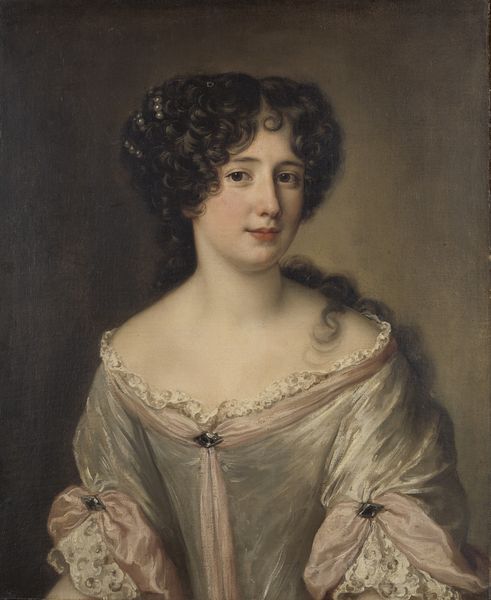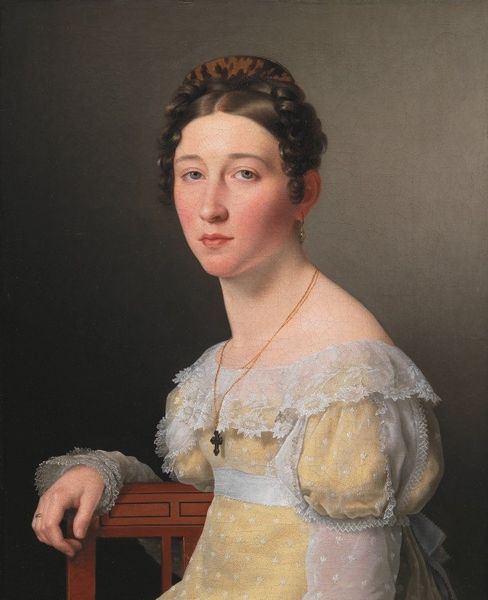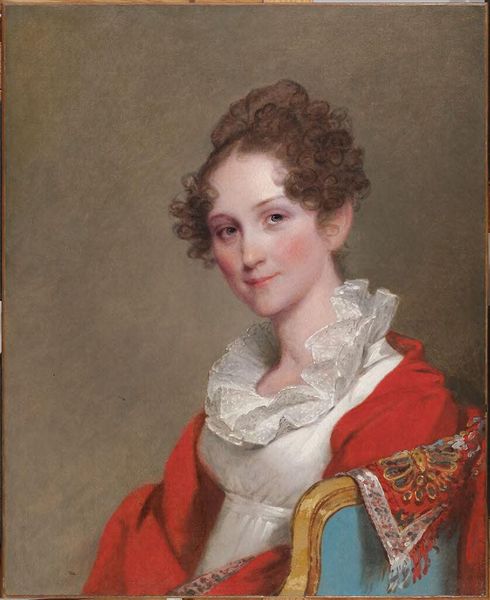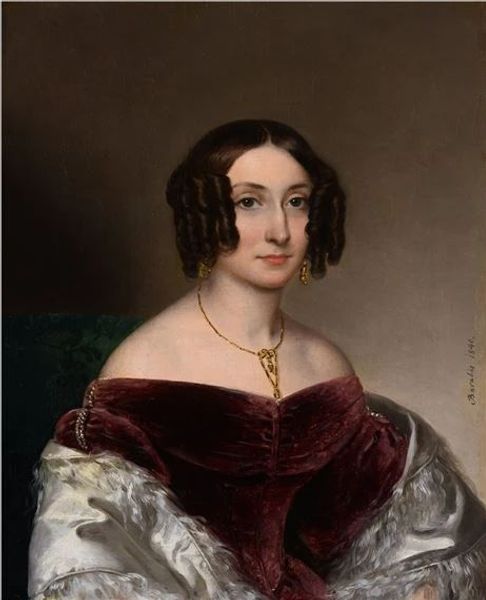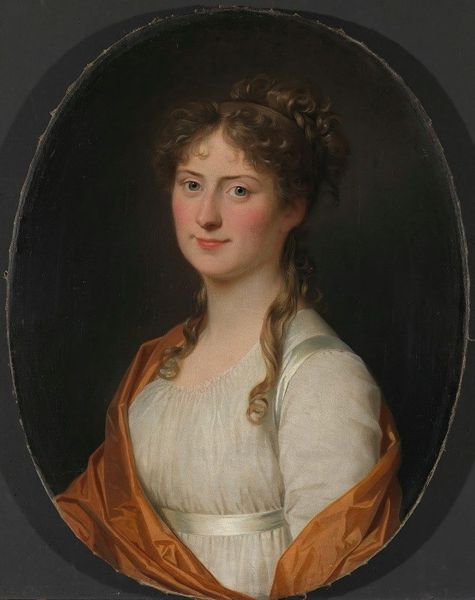
Jacoba Vetter (1796-1830), Wife of Pieter Meijer Warnars, Amsterdam Bookseller c. 1821 - 1825
0:00
0:00
charleshowardhodges
Rijksmuseum
oil-paint
#
portrait
#
portrait image
#
oil-paint
#
portrait reference
#
portrait head and shoulder
#
romanticism
#
portrait drawing
#
genre-painting
#
facial portrait
#
portrait art
#
fine art portrait
Dimensions: height 73.5 cm, width 60 cm, depth 12 cm
Copyright: Rijks Museum: Open Domain
Curator: Here we have Charles Howard Hodges’ portrait of Jacoba Vetter, painted sometime between 1821 and 1825. The sitter was the wife of a prominent Amsterdam bookseller. Editor: There’s a gentle somberness to her. A sort of quiet intelligence shines through. The reddish dress almost blends with the backdrop in its lower registers. Curator: It's intriguing to consider Hodges’ artistic origins, moving from London to The Hague amidst significant socio-political shifts in the Netherlands. He primarily worked as a portrait painter, benefiting from connections within the Batavian Republic. It gives insights into the art market in flux. Editor: Yes, and look at the almost obsessive detail on that lace collar, contrasting with the relative plainness of the background. It brings me closer, like she's peering through a gauzy curtain of time. Curator: It really does showcase Hodges' skill with rendering different textures; how the materials—paint, canvas, the fabric of Jacoba's clothing—intersect with commerce. The brushwork around her face is smoother compared to the dress. Editor: The way her paisley shawl drapes feels intimate, domestic, as though it’s falling slightly off her. I find it hard to not impose my narrative onto her stillness, wondering what occupies her thoughts beyond her wifely duties. Curator: Her clothes—specifically that red dress—provide invaluable evidence of textile production and consumer habits in 19th century Amsterdam. And don’t forget her jewelry. Editor: Perhaps a glimpse into her social positioning within that book-selling milieu! Funny to think this reserved image now speaks across the centuries in hushed art museum tones. Curator: Exactly. Examining Jacoba Vetter’s portrait invites consideration of both artistic creation and its position within broader cultural networks and mercantile dynamics of the period. Editor: For me, it feels less like an academic study and more of a subtle conversation whispered between a woman from the past and ourselves in the present, painted on a quiet day in Amsterdam.
Comments
No comments
Be the first to comment and join the conversation on the ultimate creative platform.
